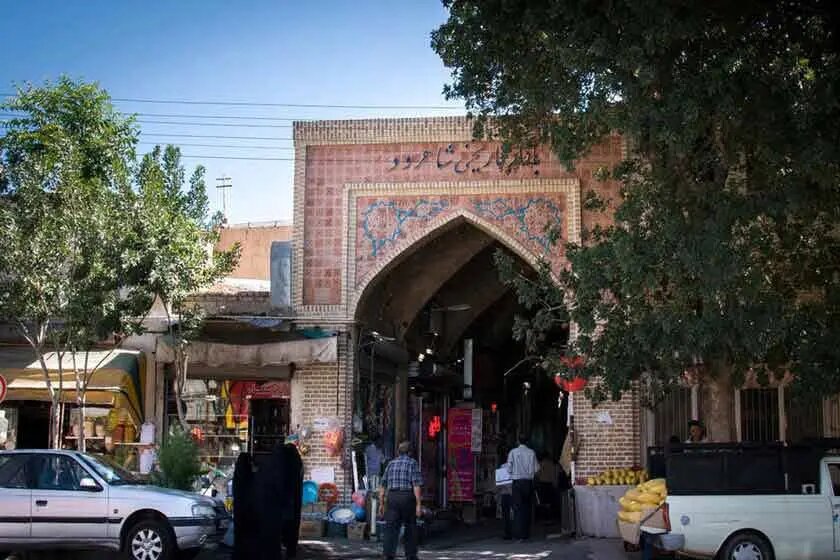Urgent restoration begins to safeguard centuries-old bazaar

TEHRAN – The centuries-old bazaar of Shahrud has undergone urgent restoration work, the tourism chief of the ancient city said on Monday.
For this stage, a team of restorers is tasked to amend old bricks and perform emergency repairs of arched rooftops, domes and gutters, Morteza Nazari said.
Situated about an altitude of 1345 m, Shahroud has unique capabilities in various aspects of tourism, including historical, mystical, and nature tourism.
The historical bazaar of Shahrud has undergone several rounds of restoration since 2011, he said. “So far, many parts of its floorings have been paved with cobblestone, and the restoration of its roof is almost complete.”
The Qajar-era (1789-1925) bazaar embraces three caravanserais, two Timches (small arcaded courtyards each dedicated to a single type of business), and a public bathhouse. Furthermore, the bazaar is home to over 250 shops in an area of 2,500 square meters.
Bazaar is, originally, a public market district of a Persian town. The bazaar of the ancient Islamic world was vividly described in the folktales of “The Thousand and One Nights.” Located in a distinct quarter of a town, it was bustling and noisy by day in contrast to the quiet residential quarters. Access was forbidden after sundown.
Distinctive architecture characterized some bazaars—such as those built at Kashan and Isfahan in Iran in the 17th century. They were usually roofed for protection against the hot desert sun, either with a single roof, with individual vaulted cupolas or domes, or with awnings.
In Iranian culture, bazaars have been traditional public spaces in Iranian cities with great contributions to commercial activities in urban life meanwhile their extended activities can be traced to social, cultural, political, and religious roles.
Most mazes and passages offer certain commodities such as carpets, metalwork, toys, clothing, jewelry, kitchen appliances, traditional spices, herbal remedies, and natural perfumes. One can also bump into colorful grocery stores, bookbinders, blacksmiths, tinsmiths, coppersmiths, tobacconists, tailors, flag sellers, broadcloth sellers, carpenters, shoemakers, and knife-makers.
Several divided carpet sections across the bazaar enable visitors to watch or buy hand-woven Persian carpets and rugs with different knot densities and other features. From another point of view, bazaars are also synonyms for foods, with their unmissable colorful stalls of vegetables, herbs, and spices. Yet, most of these ingredients might be mysterious to a foreign eye.
Browsing through a traditional bazaar may provide new experiences and fresh points of view on the ancient land. Such excursions can be made either in person or by “off-the-beaten-track” tours. Not only it’s an opportunity to discover dozens of unique local ingredients, but it’s also a chance to taste street foods and delicacies, in some traditional bakery known only by locals and shopkeepers.
People watching and even mingling with them in the bazaars is one of the best ways to take the pulse of the country. Bazaars have traditionally been major economic and social centers in any Iranian city.
AFM
Leave a Comment